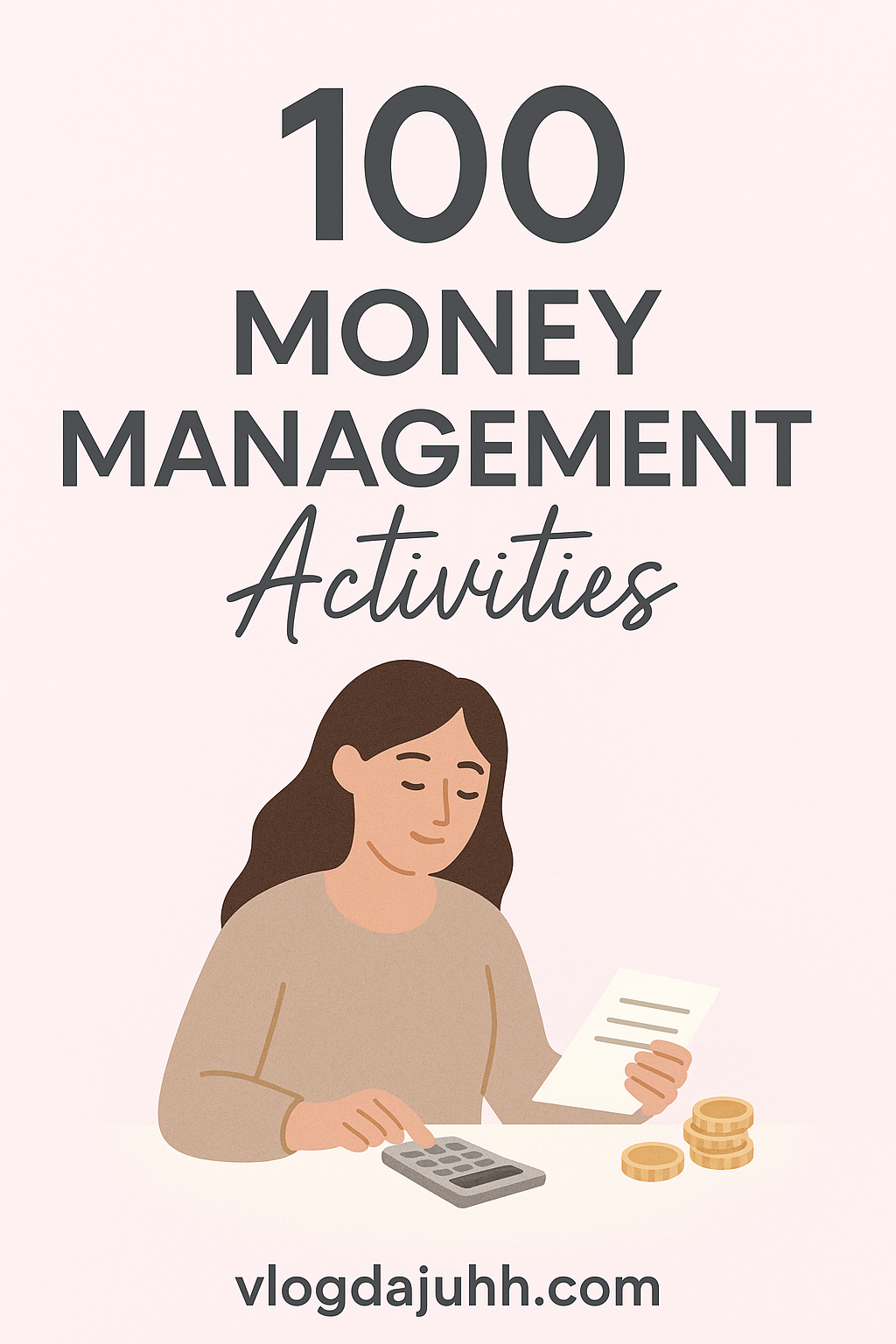This post may contain affiliate links. When you make a purchase through these links, you’re supporting the creation of content here on the blog, at no extra cost to you. Thank you for your support.

Hi, I’m Juhh!
Ready to master your money with fun, practical activities? These 100 money‑management ideas are designed to empower you—whether you’re starting from scratch or looking to level up your finance game. Let’s dive in!
📌 Love these ideas? Save this post on Pinterest to come back to it anytime!
Goals & Budget Planning
1. Set a clear savings goal
Visualize what you want—vacation, new gadget, buffer fund—and give it a target and a date.
2. Create a zero-based budget
Assign every dollar a job each month so you have a plan for every cent.
3. Track monthly expenses
Record every purchase for a month to see where your money goes.
4. Categorize your spending
Group expenses like groceries, entertainment, and bills to identify areas to optimize.
5. Automate bill payments
Set up autopay for recurring bills to avoid late fees and stress.
6. Set up automatic transfers
Have a portion of your income moved to savings as soon as it hits your account.
7. Build a sinking fund
Save small amounts monthly for irregular expenses like gifts or car repairs.
8. Reevaluate subscriptions
Cancel services you’re not using—streaming, apps, boxes.
9. Do a money date once a week
Review your spending and balance weekly to stay on top of finances.
10. Use cash envelopes
Allocate physical cash for categories like dining out to stay within budget.
11. Plan meals for the week
Create grocery lists from meal-planning to cut impulsive purchases.
12. Track per-unit cost
Check price per ounce/unit to know real value and avoid overpaying.
13. Take the 24‑hour rule
Pause before purchases over a set amount to avoid impulse buying.
14. Compare insurance
Shop around for auto, health, renters insurance to get better rates.
15. Shop generic brands
Choose store brands for staples like pasta and toiletries.
16. DIY one household item
Make your own cleaning solution or decor to save money.
17. Use library resources
Borrow books, movies, classes instead of buying or subscribing.
18. Track your credit score
Monitor it regularly to know where you stand for loans and interest rates.
19. Set a debt‑repayment date
Pick a date to be debt-free and structure payments to match.
20. Use the snowball method
Pay off smallest debts first, then roll that amount into bigger balances.
21. Use the avalanche method
Pay highest-interest debt first to save the most on interest.
22. Negotiate a bill
Call providers to ask for discounts on internet, phone or utilities.
23. Do a “no‑spend weekend”
Plan free activities like hikes or game night to reset your spending habits.
24. Use a cashback app
Earn rewards on everyday purchases with cashback platforms.
25. Try a round‑up app
Apps that round purchases up and invest or save the spare change.
You’re just getting started! ✨
Click below to keep exploring even more inspiring ideas!
🧠💵📈

